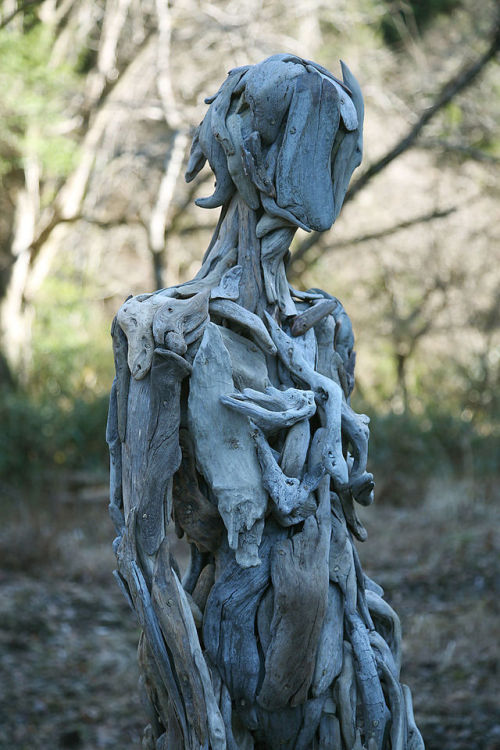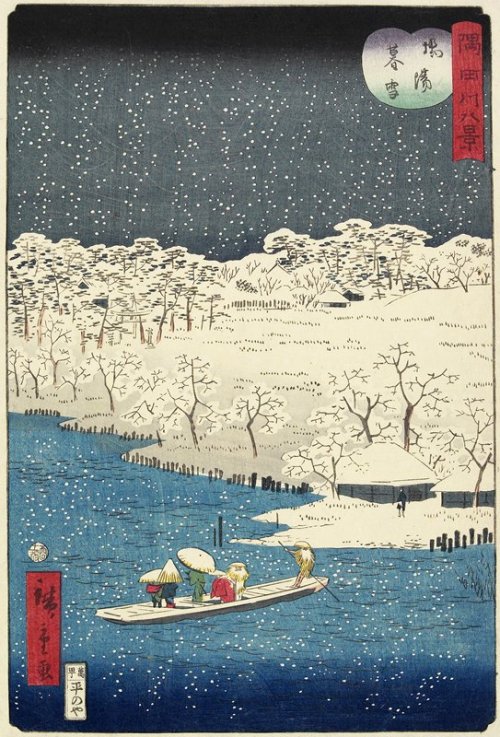Zoom Into The Bloodstream By Linda Nye

Zoom into the Bloodstream by Linda Nye
This amazing visualization of human circulation takes you from the heart, to the smallest arteries, to single oxygen atoms.
How many of you can name all of the scientific components that you see here? Hint: the big yellow ball with purple on it in the back is a cholesterol particle
P.S. If you’re a nerd like me and like reading journal articles, check this one by Linda Nye on biomedical visualization out : (x)
More Posts from Ritasakano and Others
É Natal
Vamos cantar
Alegria
Em nossos
Corações!!!





Um misto de arte e de dor.










Luz Que vejo no espelho Mostra-me O que já Não sou.
Rita Sakano

Meet the real women behind Hidden Figures.
Before electronic computers were common, NASA hired mathematicians like Katherine Johnson to do the computing. Even after NASA began using IBM computers to plan its missions, Astronaut John Glenn trusted Johnson’s abilities so much that he personally requested she recheck the computer calculations that helped him become the first American to orbit the Earth.
Johnson is one of the women whose work inspired the film Hidden Figures — the true story of three African American mathematicians who helped NASA launch the first Americans into space.
Feeling inspired? See how math might figure into your life. Uncover more about Katherine Johnson →
Viagem pelas imagens.







A Whole New Jupiter: First Science Results from NASA’s Juno Mission
Early science results from NASA’s Juno mission to Jupiter portray the largest planet in our solar system as a complex, gigantic, turbulent world, with Earth-sized polar cyclones, plunging storm systems that travel deep into the heart of the gas giant, and a mammoth, lumpy magnetic field that may indicate it was generated closer to the planet’s surface than previously thought.
“We are excited to share these early discoveries, which help us better understand what makes Jupiter so fascinating,” said Diane Brown, Juno program executive at NASA Headquarters in Washington. “It was a long trip to get to Jupiter, but these first results already demonstrate it was well worth the journey.”
Juno launched on Aug. 5, 2011, entering Jupiter’s orbit on July 4, 2016. The findings from the first data-collection pass, which flew within about 2,600 miles (4,200 kilometers) of Jupiter’s swirling cloud tops on Aug. 27, are being published this week in two papers in the journal Science, as well as 44 papers in Geophysical Research Letters.
“We knew, going in, that Jupiter would throw us some curves,” said Scott Bolton, Juno principal investigator from the Southwest Research Institute in San Antonio. “But now that we are here we are finding that Jupiter can throw the heat, as well as knuckleballs and sliders. There is so much going on here that we didn’t expect that we have had to take a step back and begin to rethink of this as a whole new Jupiter.”
Among the findings that challenge assumptions are those provided by Juno’s imager, JunoCam. The images show both of Jupiter’s poles are covered in Earth-sized swirling storms that are densely clustered and rubbing together.
“We’re puzzled as to how they could be formed, how stable the configuration is, and why Jupiter’s north pole doesn’t look like the south pole,” said Bolton. “We’re questioning whether this is a dynamic system, and are we seeing just one stage, and over the next year, we’re going to watch it disappear, or is this a stable configuration and these storms are circulating around one another?”
Another surprise comes from Juno’s Microwave Radiometer (MWR), which samples the thermal microwave radiation from Jupiter’s atmosphere, from the top of the ammonia clouds to deep within its atmosphere. The MWR data indicates that Jupiter’s iconic belts and zones are mysterious, with the belt near the equator penetrating all the way down, while the belts and zones at other latitudes seem to evolve to other structures.
The data suggest the ammonia is quite variable and continues to increase as far down as we can see with MWR, which is a few hundred miles or kilometers.
Prior to the Juno mission, it was known that Jupiter had the most intense magnetic field in the solar system. Measurements of the massive planet’s magnetosphere, from Juno’s magnetometer investigation (MAG), indicate that Jupiter’s magnetic field is even stronger than models expected, and more irregular in shape. MAG data indicates the magnetic field greatly exceeded expectations at 7.766 Gauss, about 10 times stronger than the strongest magnetic field found on Earth.
“Juno is giving us a view of the magnetic field close to Jupiter that we’ve never had before,” said Jack Connerney, Juno deputy principal investigator and the lead for the mission’s magnetic field investigation at NASA’s Goddard Space Flight Center in Greenbelt, Maryland.
“Already we see that the magnetic field looks lumpy: it is stronger in some places and weaker in others. This uneven distribution suggests that the field might be generated by dynamo action closer to the surface, above the layer of metallic hydrogen. Every flyby we execute gets us closer to determining where and how Jupiter’s dynamo works.”
Juno also is designed to study the polar magnetosphere and the origin of Jupiter’s powerful auroras – its northern and southern lights.
These auroral emissions are caused by particles that pick up energy, slamming into atmospheric molecules. Juno’s initial observations indicate that the process seems to work differently at Jupiter than at Earth.
Juno is in a polar orbit around Jupiter, and the majority of each orbit is spent well away from the gas giant. But, once every 53 days, its trajectory approaches Jupiter from above its north pole, where it begins a two-hour transit (from pole to pole) flying north to south with its eight science instruments collecting data and its JunoCam public outreach camera snapping pictures. The download of six megabytes of data collected during the transit can take 1.5 days.
“Every 53 days, we go screaming by Jupiter, get doused by a fire hose of Jovian science, and there is always something new,” said Bolton. “On our next flyby on July 11, we will fly directly over one of the most iconic features in the entire solar system – one that every school kid knows – Jupiter’s Great Red Spot. If anybody is going to get to the bottom of what is going on below those mammoth swirling crimson cloud tops, it’s Juno and her cloud-piercing science instruments.”
NASA’s Jet Propulsion Laboratory in Pasadena, California, manages the Juno mission for NASA. The principal investigator is Scott Bolton of the Southwest Research Institute in San Antonio. The Juno mission is part of the New Frontiers Program managed by NASA’s Marshall Space Flight Center in Huntsville, Alabama, for the agency’s Science Mission Directorate. Lockheed Martin Space Systems, in Denver, built the spacecraft.
IMAGE 1….This image shows Jupiter’s south pole, as seen by NASA’s Juno spacecraft from an altitude of 32,000 miles (52,000 kilometers). The oval features are cyclones, up to 600 miles (1,000 kilometers) in diameter. Multiple images taken with the JunoCam instrument on three separate orbits were combined to show all areas in daylight, enhanced color, and stereographic projection. JunoCam’s raw images are available at www.missionjuno.swri.edu/junocam for the public to peruse and process into image products
IMAGE 2….NASA’s Juno spacecraft carries an instrument called the Microwave Radiometer, which examines Jupiter’s atmosphere beneath the planet’s cloud tops. This image shows the instrument’s view of the outer part of Jupiter’s atmosphere. Before Juno began using this instrument, scientists expected the atmosphere to be uniform at depths greater than 60 miles (100 kilometers). But with the Microwave Radiometer, scientists have discovered that the atmosphere has variations down to at least 220 miles (350 kilometers), as deep as the instrument can see. In the cut-out image to the right, orange signifies high ammonia abundance and blue signifies low ammonia abundance. Jupiter appears to have a band around its equator high in ammonia abundance, with a column shown in orange. This is contrary to scientists’ expectations that ammonia would be uniformly mixed.
IMAGE 3….The complexity and richness of Jupiter’s “southern lights” (also known as auroras) are on display in this animation of false-color maps from NASA’s Juno spacecraft. Auroras result when energetic electrons from the magnetosphere crash into the molecular hydrogen in the Jovian upper atmosphere. The data for this animation were obtained by Juno’s Ultraviolet Spectrograph. The images are centered on the south pole and extend to latitudes of 50 degrees south. Each frame of the animation includes data from 30 consecutive Juno spins (about 15 minutes), just after the spacecraft’s fifth close approach to Jupiter on February 2, 2017. The eight frames of the animation cover the period from 13:40 to 15:40 UTC at Juno. During that time, the spacecraft was receding from 35,000 miles to 153,900 miles (56,300 kilometers to 247,600 kilometers) above the aurora; this large change in distance accounts for the increasing fuzziness of the features. Jupiter’s prime meridian is toward the bottom, and longitudes increase counterclockwise from there. The sun was located near the bottom at the start of the animation, but was off to the right by the end of the two-hour period. The red coloring of some of the features indicates that those emissions came from deeper in Jupiter’s atmosphere; green and white indicate emissions from higher up in the atmosphere.
IMAGE 4….As NASA’s Juno spacecraft flew through the narrow gap between Jupiter’s radiation belts and the planet during its first science flyby, Perijove 1, on August 27, 2016, the Stellar Reference Unit (SRU-1) star camera collected the first image of Jupiter’s ring taken from the inside looking out. The bright bands in the center of the image are the main ring of Jupiter’s ring system. While taking the ring image, the SRU was viewing the constellation Orion. The bright star above the main ring is Betelgeuse, and Orion’s belt can be seen in the lower right. Juno’s Radiation Monitoring Investigation actively retrieves and analyzes the noise signatures from penetrating radiation in the images of the spacecraft’s star cameras and science instruments at Jupiter.
IMAGE 5….This sequence of enhanced-color images shows how quickly the viewing geometry changes for NASA’s Juno spacecraft as it swoops by Jupiter. The images were obtained by JunoCam. Once every 53 days the Juno spacecraft swings close to Jupiter, speeding over its clouds. In just two hours, the spacecraft travels from a perch over Jupiter’s north pole through its closest approach (perijove), then passes over the south pole on its way back out. This sequence shows 14 enhanced-color images. The first image on the left shows the entire half-lit globe of Jupiter, with the north pole approximately in the center. As the spacecraft gets closer to Jupiter, the horizon moves in and the range of visible latitudes shrinks. The third and fourth images in this sequence show the north polar region rotating away from our view while a band of wavy clouds at northern mid-latitudes comes into view. By the fifth image of the sequence the band of turbulent clouds is nicely centered in the image. The seventh and eighth images were taken just before the spacecraft was at its closest point to Jupiter, near Jupiter’s equator. Even though these two pictures were taken just four minutes apart, the view is changing quickly. As the spacecraft crossed into the southern hemisphere, the bright “south tropical zone” dominates the ninth, 10th and 11th images. The white ovals in a feature nicknamed Jupiter’s “String of Pearls” are visible in the 12th and 13th images. In the 14th image Juno views Jupiter’s south poles.
IMAGE 6….Waves of clouds at 37.8 degrees latitude dominate this three-dimensional Jovian cloudscape, courtesy of NASA’s Juno spacecraft. JunoCam obtained this enhanced-color picture on May 19, 2017, at 5:50 UTC from an altitude of 5,500 miles (8,900 kilometers). Details as small as 4 miles (6 kilometers) across can be identified in this image. The small bright high clouds are about 16 miles (25 kilometers) across and in some areas appear to form “squall lines” (a narrow band of high winds and storms associated with a cold front). On Jupiter, clouds this high are almost certainly composed of water and/or ammonia ice.
IMAGE 7….Small bright clouds dot Jupiter’s entire south tropical zone in this image acquired by JunoCam on NASA’s Juno spacecraft on May 19, 2017, at an altitude of 7,990 miles (12,858 kilometers). Although the bright clouds appear tiny in this vast Jovian cloudscape, they actually are cloud towers roughly 30 miles (50 kilometers) wide and 30 miles (50 kilometers) high that cast shadows on the clouds below. On Jupiter, clouds this high are almost certainly composed of water and/or ammonia ice, and they may be sources of lightning. This is the first time so many cloud towers have been visible, possibly because the late-afternoon lighting is particularly good at this geometry.
Agosto, mês dos festivais de rua!! Adoro!
Experience The Best Japanese Summer Festivals...

Like India Japan is land of festivals(Matsuri).They have year long festivals from thanking the god for crops , celebrating sea day, giving thanks to their ancestors to appease the god’s thought to cause fire, floods and earthquakes.The whole county is found immersed with fun festival activities and events ranging from processions and traditional performances to ancient ceremonies.Few of them are-
1)Gion Matsuri-The Gion Matsuri gives the chance to see traditional Japanese performances , spectacular festival floats, girls and boys dressed in summer kimono & yukata and Japan’s finest festival food. The highlight of the festival is the dozens of huge festival floats that are pulled through the streets of Kyoto on July 17, the main festival day.

2)Tenjin Matsuri - The Tenjin Matsuri is ranked as one of Japan’s three greatest festivals including Gion Matsuri in Kyoto and Kanda Matsuri in Tokyo. The festival is held at the famous Tenmangu Shrine in Osaka and honors the god of learning.The major part of the festival includes the land procession with portable shrines ,a river procession with festival boats along the Okawa River and spectacular fireworks as night falls.

3)Kanda Matsuri- The Kanda festival is celebrated as a demonstration of prosperity with prime reason being worshipping the god of good harvest and matrimony and the god of fishermen and businessmen.The crowd goes crazy with the start of procession This procession features crowd favorites such as men on horses clad in samurai uniforms, festival floats with characters from popular folk stories and contemporary pop culture, musicians and dancers.

4)Obon Matsuri - The Bon festival, also known as Obon, is usually one of the biggest summer festivals in Japan. Although it’s not an official holiday, most people get about 3 days off during Obon season. At Obon, people honor their dead ancestors through a special type of dance (Bon Odori / Bon Dance) and also take this time to visit the resting places of their dead relatives.

So festivals are integral part of any culture of any country, but what’s so special about Japanese Festivals??
Japanese Food - You have to eat it to believe it…the mouthwatering snack stands at matsuri is people are crazy about! I bet if you can stand in those long queues of yakitori(grilled chicken in sticks) and karage (fried chicken skewed in stick with a cream dip!! Not to be forgotten the yakisoba more like the desi chowmein all stirred with vegetables and fish(optional).The okunomiyakai sometimes called as Japanese pizza is made up of cabbage /egg/tons of veggies with the topping of green onion,mayo and sweet sauce.You cannot stop at the jagabata stand which the traditional baked potatoes without skin tossed with salt and butter, which you can add as much as your arteries can stand!

Japanese Yukata- Japanese festivals gives you the chance to see beautiful, colourful yukata, which is a causal cotton summer kimono usually worn to festivals in Japan. It is a rare chance to see so many Japanese dressed in this beautiful traditional outfit as well as a fantastic opportunity to join in on the action and dress in a yukata yourself. Yukata are available for rent easily in Tokyo.

Fireworks- “Summer”: The season of fireworks also called as Hanabi has a long history in Japan.Japanese fireworks events (Hanabi) have an electric atmosphere & people dress in tradition yukata and lay mats in the grass for party with friends and family.People go to the firework locations 1-2 hours beforehand to reserve the best viewing location.With the fireworks starting the hooting becomes crazy with people shouting kirei and sugoi(beautiful/splendid) with beer cans and recording cameras in hand!!

The feel and rush of excitement of Japanese Festivals is something cannot be described in words…you have to be here to feel it!!
Interested in knowing more? Contact us right away: http://ghumojapan.com/






What is it about this twilight hour? Even the sound of a barely perceptible breeze pierces the heart. (Ono no Komachi, c. 825 – c. 900, Japanese poet of the early Heian period).
It’s no longer day but night hasn’t come yet either. One by one, the voices that fill the hours of the day with their incessant noise fade until the silence is almost complete. Some aspects of the colours stay concealed in daylight, but now comes the moment for them to appear. The evening light reduces every superfluous detail, every unnecessary shape; it is at the same time the absolute truth and the most beautiful lie.
Today let’s wander in evening landscapes (top to bottom, left to right): Evening at Ushibori, by Kawase Hasui, 1930 [source]; Evening Glow at Choshi, by Tsuchiya Koitsu, 1932 [source]; Dusk at Itako, by Kawase Hasui, 1932 [source]; Fishing Boats at Sea, by Ohara Koson, c. 1900 [source]; Evening at Minano in Chichibu, by Kawase Hasui, 1946 [source]; Evening Snow at Hashiba, by Utagawa Hiroshige II 1861 [source].
Ransomware
Entenda o que é ransomware: o malware que sequestra computadores http://www.tecmundo.com.br/seguranca-de-dados/116360-especialista-explica-crescimento-ransomware-brasil.htm

On this day but in 1750, Caroline Lucretia Herschel was born.
Caroline Herschel was the sister of the astronomer William Herschel. After learning astronomy alone and math with the help of her brother, she became his assistant. His most significant contribution to astronomy were the discoveries of various comets, especially comet 35P / Herschel-Rigollet.
-
 petersolarz liked this · 2 years ago
petersolarz liked this · 2 years ago -
 riotouseaterofflesh reblogged this · 2 years ago
riotouseaterofflesh reblogged this · 2 years ago -
 underneaththesamesky7 liked this · 5 years ago
underneaththesamesky7 liked this · 5 years ago -
 pantacli reblogged this · 6 years ago
pantacli reblogged this · 6 years ago -
 stariodadelmann liked this · 6 years ago
stariodadelmann liked this · 6 years ago -
 yolebon reblogged this · 7 years ago
yolebon reblogged this · 7 years ago -
 icyboo-com-blog reblogged this · 8 years ago
icyboo-com-blog reblogged this · 8 years ago -
 summonsloth reblogged this · 8 years ago
summonsloth reblogged this · 8 years ago -
 zealpatra reblogged this · 8 years ago
zealpatra reblogged this · 8 years ago -
 zealpatra liked this · 8 years ago
zealpatra liked this · 8 years ago -
 tracyjackman-blog liked this · 8 years ago
tracyjackman-blog liked this · 8 years ago -
 barefootonbrokenglass reblogged this · 8 years ago
barefootonbrokenglass reblogged this · 8 years ago -
 barefootonbrokenglass liked this · 8 years ago
barefootonbrokenglass liked this · 8 years ago -
 mmbfd-blog liked this · 8 years ago
mmbfd-blog liked this · 8 years ago -
 photoncheese liked this · 8 years ago
photoncheese liked this · 8 years ago -
 qtpie3 liked this · 8 years ago
qtpie3 liked this · 8 years ago -
 jediiilove reblogged this · 8 years ago
jediiilove reblogged this · 8 years ago -
 bioengr reblogged this · 8 years ago
bioengr reblogged this · 8 years ago -
 frostypotatoes6 reblogged this · 8 years ago
frostypotatoes6 reblogged this · 8 years ago -
 ritasakano reblogged this · 8 years ago
ritasakano reblogged this · 8 years ago -
 ritasakano liked this · 8 years ago
ritasakano liked this · 8 years ago -
 omgnotebookdoodles-blog liked this · 8 years ago
omgnotebookdoodles-blog liked this · 8 years ago -
 mmyyame liked this · 8 years ago
mmyyame liked this · 8 years ago -
 thepursuitofscience reblogged this · 8 years ago
thepursuitofscience reblogged this · 8 years ago -
 nerdybouquetpizza-blog liked this · 8 years ago
nerdybouquetpizza-blog liked this · 8 years ago -
 notsofriendlypoltergeist-blog liked this · 8 years ago
notsofriendlypoltergeist-blog liked this · 8 years ago -
 amelialutece liked this · 8 years ago
amelialutece liked this · 8 years ago -
 twitty42 liked this · 8 years ago
twitty42 liked this · 8 years ago -
 zi-yiwastaken liked this · 8 years ago
zi-yiwastaken liked this · 8 years ago -
 thundrhamr reblogged this · 8 years ago
thundrhamr reblogged this · 8 years ago -
 lillypad39-blog reblogged this · 8 years ago
lillypad39-blog reblogged this · 8 years ago -
 whitebluewings liked this · 8 years ago
whitebluewings liked this · 8 years ago -
 doctorravenwho reblogged this · 8 years ago
doctorravenwho reblogged this · 8 years ago